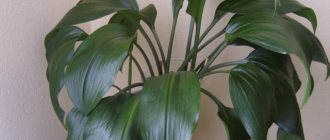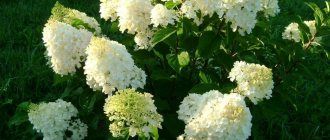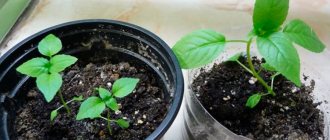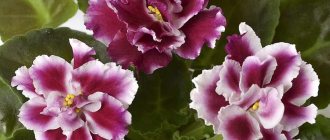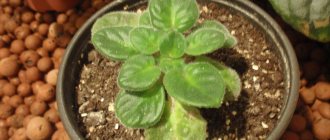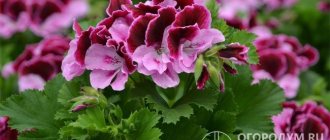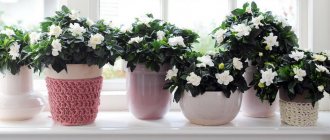Success in growing adenium depends 50% on properly selected soil. Many can argue with this, because with an abundance of light and heat, this plant grows in any substrate. But if conditions are not ideal, then the soil will be important. And in this article we will teach you how to make soil that is suitable specifically for your green pets.
- Criteria for good soil
- Base for soil
- Leavening agents
- Special Additives
- Ready soils
- How to make your own soil
Criteria for good soil
Unfortunately, there is no universal recipe or secret formula for any conditions of detention. But there are important principles that must always be followed.
Ease. The soil for adenium should not cake, it will become compacted. The correct substrate allows water and air to pass through easily and dries quickly. If you decide to replant an adenium, you take it out of the pot, and instead of soil you have a stone or a piece of clay - this soil is clearly unsuitable.
Looseness. A condition that follows from the previous paragraph. So that the earth ball does not cake over time, and the roots are always supplied with a large amount of oxygen, the substrate must be breathable. To do this, various baking powders are added to it. A good indicator is if, with a strong squeeze in your hand, the soil remains loose. And also, water does not stagnate in loose soil, which means the risk of root rot is reduced.
Moisture capacity. A criterion that you need to be very careful with. The amount of moisture-retaining components will largely be determined by your growing conditions. Often, only through experience it is possible to find a balance between the substrate, which has to be watered daily, and the swamp soil.
Nutritional value. Adenium is native to desert, arid regions where soils are poor in nutrients. But modern hybrids most often come from tropical Asian countries. And there breeders do not adhere to strict diets. Increasingly, domestic adenium growers recommend not using empty, inert soils, but adding nutritional components to the substrates.
Acidity. According to the Ph indicator, the soil for adenium should be in the range of 5.5–7, that is, from slightly acidic to neutral. Some adenium growers also use weakly alkaline substrates.
Let's move from the general to the specific and figure out what the soil for adenium may consist of. Conventionally, all components can be divided into a base, leavening agents and special additives (organic and mineral fertilizers of prolonged action).
What to do with old land
After replanting, the old soil must be thrown away or poured into an outdoor flower bed. It cannot be reused in indoor floriculture for two reasons:
- As a result of prolonged watering, even with boiled water, many different salts, including lime, accumulate in the substrate. High concentrations of these substances are detrimental to almost all house plants, and especially to succulents.
- In the substrate in which the seedling grew, its own soil microflora inevitably multiplies. It is impossible to control its composition. In the course of their life activity, bacteria, fungi, and microalgae secrete all kinds of compounds, which are also not possible to remove from the soil.
Even a beginner can prepare the ideal soil for replanting adenium with his own hands. The main thing is to take into account the needs of the succulent and provide it with an optimal environment for growth.
Base for soil
The components that are taken as a basis are not used independently. They must be diluted with baking powder. As a percentage, the base makes up from 50 to 70% of the entire soil mixture.
Universal soil for indoor plants
There is a lot of controversy and different opinions regarding the use of this component. The majority, however, is inclined to believe that this is not the most suitable option. But there are those who prefer to use only universal soil with a small content of baking powder.
Our shop has not been able to get good results with this primer. In addition, we do not recommend using cheap store-bought mixtures. They mostly consist of high-moor peat, which strongly acidifies the substrate. An acidic environment negatively affects the growth of adenium. If you decide to go with a universal soil, then choose a proven brand or your favorite one. For example, German companies have proven themselves well.
|
|
Pros:
- Easy to find - sold in almost any garden store.
- Relatively low cost.
- Ideally it should be suitable for most plants.
- Nutritious, does not require additional organic fertilizers.
Minuses:
- Good companies are not sold everywhere.
- Quality brands are not that cheap.
- Such soil mixtures are very heavy and moisture-intensive, so they require a large amount of disintegrants.
- The composition of macro and microelements is not always suitable for succulents.
- Poor quality substrate may contain pests, insects, fungi, weeds and bacteria. Sometimes you even come across rusty nails and pieces of shoelaces.
Special soils for cacti and succulents (bonsai)
This category of substrates is used in growing adenium much more often than the first. And many experienced adenium growers use and recommend this particular option.
In this case, it is also important to trust only high-quality, proven companies. But regardless of the brand, our store does not recommend using such mixtures as an independent substrate. Always add raising agents.
| As a good example of such soils, we again use the German company Greenworld. She has two options: “for cacti and bonsai” and “for cacti and succulents” - both are suitable. | And another company that we have already mentioned is compo sana. Their product line has a similar division as the previous brand. | Bonsai soil is a little denser in structure, but this can be easily corrected with the help of baking powder |
Pros:
- It is optimally suited both in composition and ph value.
- Contains the necessary nutrients and minerals - at first it does not require additional fertilizer.
- They are not that difficult to improve with other components.
Minuses:
- Good cactus soils are not cheap.
- They are not easy to get - they are not sold in all stores.
- Mixtures using these substrates are relatively dense and moisture-intensive, which requires some skill in regulating watering.
- They are not sterile and may contain pests, insects, fungi, bacteria and weeds.
Peat soil Klasmann TS1
Most universal substrates and cactus soils contain peat as the main component. But its independent use in adenium farming has not become widespread. Although many people use peat tablets to germinate seeds. Later, the seedlings are still transplanted into more suitable soil mixtures.
Peat soils have a pH shift towards the acidic side, which is not suitable for growing adenium. In addition, they are very moisture-intensive and over time strongly cake and compact.
Klasmann occupies a special place among all peat producers. This brand is also called professional. Their product is characterized by increased lightness and airiness and has a slightly acidic pH. It also contains surfactants that ensure easy absorption of moisture. It contains complex water-soluble fertilizers and microfertilizers.
Recently, adenium growers in Russia have paid attention to this substrate. Although there is still not enough experience in its use on adeniums.
The company has a wide range of products, but this one is more suitable for growing adenium
Pros:
- Very light and loose substrate.
- It does not cake and compact as much over time as other peat soils.
- Contains mineral fertilizers, which means you don’t need to apply them the first time you use them.
- This is a sterile soil and does not require additional processing.
Minuses:
- Not easy to get, rarely sold in gardening stores.
- There is no small packaging, it is produced in large briquettes.
- Relatively high price when purchased packaged in liters.
- High peat is poor and will require frequent application of organic fertilizers.
- Moisture-intensive, requires skill in watering. It must be carefully combined with other baking powders with similar properties.
Coco soil
This is the most popular base among adenium lovers. It can be sold in the form of compressed disks or briquettes, as well as special tablets for planting seeds. When soaked in warm water, they increase in volume by 7–9 times. The result is a moderately moisture-intensive substrate, but it will be airy, light, and will not cake over time.
An example of increasing the volume of a coconut tablet.
We use this component as the basis for our store’s branded primer. And we can safely recommend it to you for preparing your own soil mixture for adenium.
There are many companies producing coco-soil; they do not differ much in price. Try to choose not the cheapest brands. Before pressing, coconut fiber could be washed in sea water rather than fresh water. This makes the production process and the final product cheap, but significantly affects the quality of the substrate. The high content of salts and minerals in it will have a detrimental effect on your plants.
|
|
|
|
Pros:
- Low price.
- Sold in many garden stores.
- Sterile substrate, does not require treatment or disinfection.
- It has an optimal pH level for growing adenium.
- It has all the necessary properties: lightweight, breathable, moderately moisture-absorbing, and does not cake too much over time.
- Durable, easily restores moisture-holding properties after complete drying, unlike peat soils.
- The soil based on it turns out to be inert, and you yourself regulate the content of nutrients in it.
Minuses:
- Poor quality soil often contains large amounts of salts, which can harm your plants.
- Coconut substrate has virtually no nutrients, so you will have to fertilize it yourself. (This is both a plus and a minus)
Deciduous humus soil
For residents of large cities, especially those who do not have their own plot and are accustomed to purchased substrates, this option will be the most difficult. And from here comes its main disadvantage - this land needs to be mined. It consists of two components: leaf and humus soil.
Leaf soil is formed as a result of decay of leaves. It can be found under a large cluster of trees - a forest, a garden. The main thing is not to collect under oak, poplar, willow or chestnut. Their leaves contain a large amount of tannins, which will have a bad effect on adeniums.
Humus soil or, in other words, manure can be easily bought somewhere in the village. Soil from a compost heap is also suitable.
This is what you should get.
Next, the whole thing is mixed in a one to one ratio, if desired, add a little peat soil or coco soil, and at the end, baking powder. And, behold, the ground is ready for adenium. All that remains is to sterilize her. The process is not easy, of course, but such a substrate is ideal. And then decide for yourself whether you want to do this or not.
Consequences of the wrong choice
- Strong acidity of the soil or, conversely, an alkaline environment leads to disease of the tree (you can learn about possible problems, diseases and pests of adenium here, and from this article you will learn about the causes of desert rose diseases and methods of treatment). The plant cannot absorb nutrients and trace elements and stops developing.
- In moist and dense soil, the tree begins to rot; conditions are favorable for the development of harmful microorganisms.
- Excessive soil nutrition leads to lush growth of foliage, with scant flowering or its complete absence.
Adenium is an unusually beautiful plant that pleases with its flowering for a long time. The main condition for this is the choice of high-quality soil. Whether you purchase the substrate in a store or prepare it yourself, compliance with all requirements for its composition will give you the opportunity to enjoy the appearance of a flowering plant all year round.
Other landless substrates
This group includes a large number of soils, but we will briefly talk about the most popular ones. It is more difficult to obtain such components than all those listed earlier. Therefore, it is unlikely that it would be rational to use them when preparing a soil mixture for adenium. In addition, they are all very expensive. If you still want to, you can look for similar ones in stores that sell bonsai products.
Akadama
A special type of baked clay, which is produced only in Japan, in the province of the same name. Among the disadvantages: it is very expensive, it needs to be sifted before use, and it also breaks down over time (after about two years). On the plus side: it is a leavening agent.
There are different breeds and fractions, but we’ll leave this information for bonsai lovers
Pumice
Soft volcanic rock with good moisture holding capacity. The porous structure perfectly stimulates the growth of small roots.
Lava
It absorbs water well and loosens the soil well. Together with the previous component, it is part of the Lechuza Pon substrate, which is easier to obtain than each of them separately.
Styrofoam
If all the previous components did not suit you for one reason or another, then the old proven polystyrene foam is always at hand. On the other hand, why not. It will cope with the task of making the substrate more airy and loose. But it’s creaky, it’s an infection.
Growing conditions
For high-quality growth and active expansion of the root system and ground volume, you should carefully monitor the care of the young seedling. Only the right influences and care for the flower will allow you to get an adult, original plant with bright large flowers.
In order to properly care for the plant, the following recommendations should be followed:
- Lighting – the plant requires a lot of sunlight. It is not afraid of the baking bright rays at lunchtime. Therefore, it should be placed on southern windows. In winter, it is recommended to additionally highlight the plant. If suddenly the tree begins to stretch out and turn pale, then this is a clear sign of a lack of lighting.
- Temperature – succulents come from hot countries, so the optimal temperature for them is air degrees from +26..+35 C. During the dormant period, it is not worth specifically reducing the temperature in the room; degrees favorable for development may continue to remain. But if necessary, the plant can tolerate temperatures of +10..+13 C.
- Humidity - in most cases, in city apartments, both in summer and in winter, the indoor air remains dry. If for other plants it is necessary to constantly maintain a certain humidity, then for adenium increased temperature and dry air are favorable conditions.
The main thing is not to move the plant from place to place. The tree must learn to live according to the natural clock. If you put the flowerpot in a dark place for the winter and do not put it on the south side in time, then the leaves that appear will be burned by the first rays of the sun when moved. Otherwise, if the flowerpot stands in one place all year, then the foliage will wake up along with all of nature.
Special Additives
Special additives include various long-acting fertilizers that can be added at the time of soil preparation. This is especially true for initially nutrient-poor substrate mixtures.
Orgavit
There are different types, but horse is best. It is dry, completely sterile manure granules, practically devoid of unpleasant odor. You can use them to prepare a liquid form for pouring. But we are interested in it as a soil additive. Orgavit is a good option to make an “empty” substrate more nutritious.
| And so the packaging |
Vermicompost
In fact, it is the result of processing manure by a special “prospector” earthworm, also known as California red. This substrate can be considered an analogue of manure or black soil. It contains a large amount of humic acids. It is also an excellent source of easily digestible organic fertilizer.
To put it even more simply, the worm ate the manure and made it even more beneficial for the plants, and also neutralized it from all parasites, weeds and other things. Ideal as an additive to create nutritious soil.
| The purchased product is often a mixture with peat soil |
Osmocote
Outwardly they look like yellow balls with multi-colored inclusions. But in fact, this is a granular mineral fertilizer with delayed action. It is so smart that it independently decides when and in what quantity plants need it.
The granules are covered with a membrane shell, which gradually collapses with each watering. This promotes the uniform release of micro and macroelements located inside.
If you don’t really like applying liquid fertilizers and constantly forget about them, then feel free to add Osmocote to your soil.
Various analogues appear on the market, but so far they are significantly inferior to the original.
Basic mistakes
Soil for Dracaena - which one is needed and how to choose
The main misconception of novice gardeners is the idea that all plants need moisture to live. Therefore, dry, organic-poor soil seems to them unsuitable for replanting adenium.
In fact, an excess of organic matter is guaranteed to lead to the death of a young tree, whereas without watering it will still look great in a month. That is why components of standard and universal soils for indoor flowers, such as peat and sphagnum moss, are strictly contraindicated for succulents.
Adenium does not need peat and sphagnum
Ready soils
That is, mixtures prepared for you. Everything in them is already in its place: there is no need to mix anything and run around garden supermarkets in search of ingredients. Just buy it and use it.
Branded primer from the AdeniumBOOM store
We have developed this recipe experimentally over five years of work and continue to improve it. Our seedlings and adult grafted plants grew successfully in it.
This substrate is easy to prepare yourself at home, and our store never hides its composition.
Formula for 2022:
- 45% coco soil
- 25% perlite
- 10% zeolite
- 10% vermicompost
- 9-10% vermiculite
- 0-1% coal
Ideal for those who want to save time and effort
Seramis for cacti and succulents
In addition to their classic ones, it also contains lava granules. An excellent option for lovers of soilless substrates. It hits your wallet hard, but if that doesn’t stop you, then the quality from the Germans is worth the money.
In general, the Seramis product line is excellent for growing adeniums. If we don’t talk about the wonderful properties of this soil for plants, it is also incredibly practical and evokes aesthetic pleasure from the growing process. The substrate does not generate dust, does not get dirty, and does not require drainage. Replanting is a pleasure: you can easily take it out, add new soil, no stress for the green pets.
It is also difficult to fill a plant with such granules: it very quickly absorbs all the excess water. Yes, and you can see it by the color of the granules when they are still wet, especially if you use transparent containers. Perhaps the only negative is the need to apply organic fertilizer, since the substrate is landless. Some adenium growers mix ceramis with nutrient soil to solve this problem.
LECHUZA-PON
Another German brand, but this time with mineral granules. This is the most popular professional soil among adenium lovers. Everyone has heard about him, one way or another. The company's product line also includes patented self-watering pots, and they are as excellent as their substrate.
We also have experience growing plants in Lechuza. Ideal for the safe adaptation of vaccinations from Asian nurseries. The risks of flooding and root rot are greatly reduced. But, nevertheless, it requires skill in watering.
Ingredients: pumice, zeolite, lava, Osmocote fertilizer.
Pros:
- Meets all soil criteria for adenium listed in the article.
- Lightweight and easy to use.
- Durable, sterile and environmentally friendly.
Minuses:
- Price and availability. It is most profitable to buy a large quantity - 25 liters, but it is not always required. In addition, stores do not deliver to all localities.
- Over time it becomes alkalized.
- Requires organic fertilizer.
- It is not very convenient to germinate seeds in it; it is more suitable for adult plants and grown seedlings.
- You need to get used to the watering regime.
The most profitable volume
Lechuza-Terrapon
If you don't like soilless substrates, this is an excellent option for professionally formulated, completely ready-to-use soil.
In adenium fashion, it is not as common as its closest German relative. But it is definitely also suitable for growing adeniums.
Ingredients: Pumice, humus, crushed expanded clay, clay, Osmocote.
The most economical packaging is only 15 liters.
You can also try to germinate seeds in such a substrate. It has all the same pros and cons as Lechuza, but unlike it does not require the application of organic fertilizers.
In general, this is an excellent soil for those who are not accustomed to keeping plants simply in some kind of “pebbles,” but external conditions require a denser soil mixture structure.
Description of indoor plant
Adenium is an unusual looking plant. It is a small tree that thickens from the base, rising upward in a cone. Its roots come out, intertwine with each other, forming original plexuses and an extraordinary appearance. The crown of adenium is bright green or deep dark, depending on the variety. When flowering, unusual bright inflorescences open throughout the branches. Due to active budding, the ornamental tree is nicknamed the Sabinia star, desert rose, and also the Impala lily.
Adenium is a deciduous exotic tree.
His pedigree goes back to the Kutrov dynasty. The first appearance of the non-standard plant is identified in several regions, such as Thailand, North Africa and in parts of Malaysia. In natural wild conditions, adenium is not at all a miniature houseplant, not reaching 60 cm, but a massive huge tree. In favorable conditions of tropical forests, it can grow in height from 3 meters to 10 m. The tree has a caudex - a strong thickening in the lower part of the trunk, which tapers towards the top, diverging into numerous branches.
The stems and branches are covered with a specific bark that has a grayish smooth structure to the touch. During some periods of growth, the shade of the outer cover may change from grayish-green to dark brown. The thickening of the trunk ends in several strong branches on which leathery, glossy leaves grow. The greens have a rich dark color. The leaf blades are attached to the branches by a small petiole.
The leaf shape is lanceolate or oval. The leaves along the edges are straight, ending in a pointed end. Each leaf is curved towards the central part and has the shape of a boat. The length of the plate is from 7 to 15 cm. The first flowering of adenium occurs at 2 years of age. The buds begin to develop in early June. Throughout the summer period, flowering occurs, old inflorescences die off and new ones form. The duration of the process ends at the end of September.
Different types of exotics differ not only in the diameter of the flowers, but also in the color of the petals. The size of the opened bud is 3-13 cm, and the colors vary from pink to yellow, from red to red-black, as well as white and peach colors.
There are some of the most popular types of adeniums:
- Obesum is the most common type of exotic tree in Russia. Flowering occurs in May, the diameter of the inflorescences is 7 cm. The flowers are pink or scarlet.
- Arabic - the appearance of buds is recorded in May and continues until the first days of October. The buds stand out in a bright pink tone. In winter, it completely loses all its foliage and goes into hibernation until warm spring days.
- Socotrans is a plant of a dwarf species. It has gray leaves and a soft pink tone, closer to peach.
- Somali - flowering begins from the moment the tree reaches 15 cm in height, and most importantly, lasts all year, continuously.
Thus, adenium is a unique, interesting plant that amazes with its types of flowers, appearance and structure. Good care provokes high-quality growth and long-term flowering of large inflorescences.
How to select and prepare seed material?
To avoid rotting of seedlings, pre-sowing seed treatment is necessary, which will help neutralize spores of pathogenic fungi attached to the surface and support future growth.
The seeds can be soaked in distilled warm water for a couple of hours, but it is best to use a weak solution of potassium permanganate (for 30-40 minutes) or a suspension using crushed coal. This is followed by treatment with a biological or systemic fungicide (for example, phytosporin). It would be a good idea to keep the seeds in a solution of a growth stimulator (Energin, Epin) or zircon for 2-3 hours.
It is not difficult to select the components for this homemade soil, but it will depend on the amount of soil required. Here are the components for universal primer, which you just need to mix in a container:
- Peat soil. It is easier and more profitable to buy a large specialized soil in a bag, produced in Holland. If you need a little substrate, then German companies are suitable. Do not buy substrate containing humus.
- Perlite is an almost weightless mineral of natural origin that holds a lot of moisture. Can be bought in almost any store.
- Small expanded clay or “dry backfill”. Buy at construction markets and wash before use.
- Coal granules. You can buy laboratory equipment, but regular charcoal for the barbecue is also an option.
- Brick crumbs. The easiest way is to crush the old brick.
For some varieties of Adenium, you will need a mixture of only some components.
Soil composition for planting:
- Half cactus soil
- Quarter perlite
- Vermiculite 15%
- River sand 10%
Making soil yourself is not only convenient, but also economical.
But it is important to follow all recommendations so as not to harm the plant.
Content Features
Adenium will never have enough sunlight. In its homeland, it does not lack light, so it grows to impressive sizes. When arranging a place for a tree, it is necessary to focus on a high level of penetration of sunlight. Exceptions exist for plants from the store and young seedlings. A newly purchased plant requires adaptation - it should be gradually accustomed to bright light. And immature sprouts can burn in direct sunlight. Pots with them should be turned regularly.
Experts recommend rotating even adult adeniums on window sills. The fact is that the top of the plant tilts towards the most illuminated side. As a result, the tree grows with a twisted trunk.
Like any plant, if watered too much, adenium will rot. It is able to accumulate moisture in the thick part of the trunk, so even in dry soil it does not suffer from its deficiency. Watering is carried out differently depending on the season.
The tree is at rest. Sap flow is slow, there is no flowering, and foliage does not accumulate. It is enough to water the adenium once a month, making sure that the soil is dry.
The plant begins an active growth phase, it begins to grow new leaves and blooms. At this stage, the tree requires constant watering. Do not moisten the soil if it is not yet dry.
The water should be soft, without excess impurities. Rain or settled water would be an excellent option. After a few hours, it is necessary to drain the water accumulated in the trays
It is important to follow the rule: it is better to underfill water for adeniums than to overfill them
Adeniums are fed at home only during the period of bud formation, with each watering. The applied dose of fertilizer is reduced by three times compared to that indicated on the package. In addition to mineral supplements, a good complex fertilizer should contain equal parts of nitrogen, potassium and phosphorus.
With the onset of autumn, the frequency of fertilizing needs to be reduced. And when the tree enters a state of dormancy, they stop applying fertilizers completely.
Fertilizers in granules are well suited for plants. When watering, part of the granule will gradually dissolve and release the necessary substances.
Trimming
To give the crown density and splendor, flower growers resort to forming and pruning adenium. Sometimes these measures are necessary, since in most plants apical development is considered dominant, so that the remaining shoots cannot develop except the central one.
ATTENTION! After the tip is removed, dormant lateral buds are activated and branching begins.
Thanks to this pruning, the following result is achieved:
- the amount of foliage increases;
- the maximum number of buds is laid;
- the crown becomes smooth, lush and dense.
In addition, thanks to pruning, adult plants are rejuvenated, and some of the branches noticeably weaken with age. Carry out pruning once every 2 years, and shorten the shoots by 5-8 cm. To prune adenium, the following tools and materials are needed:
- disposable gloves;
- hand pruner;
- soap;
- alcohol;
- warm water.
Procedure:
- Before work, put on rubber gloves.
- To crush the growing point, pinch some of the stems with your fingers.
- Visually compare the thickness of the stems. The thinnest elements should be trimmed.
- Use your fingers to check all parts of the plant for elasticity. Remove soft, crooked and leafless stems. Stems growing inward should also be removed.
- Very thick branches need to be pruned to stimulate the development of the entire adenium.
- Trim the remaining stems so that the bush gets the desired shape. Make the cut above the knot. Flowers are formed from buds located under the cuttings.
Reasons for transplantation
There are many reasons and reasons for transplantation. The most important ones should be highlighted.
Transplant upon purchase
After the selected specimen is purchased and brought home, there is a need to replant the plant. This is due to the fact that in flower shops the soil in planting and shipping pots is basically standard for all flowers. And adenium requires a special soil mixture.
Disease of roots and caudex
Rotting of the caudex and root can have three causes: mechanical damage and the formation of a wound and moisture ingress into it, excessive watering and hypothermia. You can try to save the plant. Take it out of the pot, shake off excess soil and carefully cut off the affected areas with a sharp, pre-disinfected blade.
Sprinkle generously with antiseptic or fungicide and let it dry thoroughly. After this, the plant is transplanted into new soil and wait. If everything is done correctly, the flower will come to life.
Soil with the wrong composition
It often happens that flowers are given away or given to new owners, and they are already in the wrong soil. Adeniums require a special soil composition, and they are demanding about this. If the plant came to you during the dormant period, then the best solution would be to postpone the procedure until the beginning of the growing season.
When the flower is at rest, there is practically no watering and the mixture will not harm it. But if the plant suffocates and withers before your eyes, you should immediately replace the soil mixture.
Big pot
Often, inexperienced gardeners plant adenium in a pot that is too large or deep. In such a situation, it is necessary to replace the pot with a more suitable one. You should remember the rule regarding the plant's dormant period. You need to be careful with watering. A large pot takes up a lot of water, and this can lead to the death of the root and the entire flower.
small pot
Adult specimens themselves will show that the pot is too small for them. There is a peculiarity - they should be replanted only when the flowerpot bursts from the pressure of the roots. The fact is that neither the pot nor the soil can support the powerful root system of adenium.
Young plants should be replanted approximately every 2-3 years. This will be enough for them. But baby seedlings need transplantation within three to four months from the beginning of life.
Advantages and disadvantages of this method
The advantage of propagating adenium by sprouting from seeds is the rapid growth of the caudex - the thickened trunk of the plant, which is formed from the root system and, depending on the owner’s imagination, can take on a wide variety of forms. Adenium grown from seeds immediately begins to branch extensively and grows quickly.
In addition, by showing imagination, you can simulate the amazing shape of a pet from the first months of life.
But, unfortunately, it is very difficult to get fresh seeds! But it is the shelf life of planting material that affects the germination of the plant.
It is better not to take packages that indicate a shelf life of several years for seeds. Collected no earlier than a year in advance is the only suitable option.
We also suggest learning how to propagate adenium from cuttings from this article.
What kind of soil does adenium like?
Despite the fact that the flower came from the tropics, it cannot be classified as picky and capricious. The main ground on which it grows in the wild is rocky, poor soil. That is why it can grow in midland gardens and indoor pots without problems.
Adenium is a very beautiful plant with lush flowering, unpretentious in care
But the following requirements must be met:
Note! Pre-sterilization of all components of the collected soil is mandatory.
Component composition
For good growth, well-selected soil for adenium is very important: its composition includes coconut soil, charcoal, perlite, and vermiculite.
In its homeland, this plant is accustomed to poor soils, so you should not overuse organic elements, as they will cause burns to the roots.
Soil for adenium is not just soil, but a specially prepared composition
Component meaning
In order for adenium to feel comfortable, it is important that the soil mixture for it includes three groups of components:
Perlite baking powder is environmentally friendly and available. It will well protect the roots of adenium from the negative effects of temperature changes. Vermiculite retains moisture well, which reduces the amount of irrigation, and is rich in minerals (iron, magnesium, aluminum, calcium).
Coarse sand perfectly imitates the soil that the succulent is accustomed to in the wild. However, before adding it to the container, adenium must undergo mandatory disinfection.
Charcoal helps protect the plant from bacteria and fungus, reduces the acidity of the soil, but gradually leads to its alkalization.
How to care for and when to replant?
For care, in addition to lighting, humidity and temperature, other procedures should be carried out. The following rules for caring for exotics are distinguished:
- Spraying - you can periodically spray the leaves of the plant, but excessive irrigation provokes the accumulation of moisture in the joints of the foliage. The latter circumstance leads to rotting of the area. If moisture gets on the inflorescences, they will soon begin to fade, unable to withstand a certain duration of flowering. In autumn, any spraying is prohibited.
- Watering – on hot summer days, watering is mandatory for succulents. When watering, draining water must be immediately removed from the pan. Do not wait for the soil to dry completely. If the soil in the flowerpot is half dry, then it’s time to add nutrient moisture. In winter, daily watering is not required. The frequency of the event is reduced to 1 time every 4 weeks.
- Feeding is carried out during the growing season, which occurs in spring and summer. As fertilizers, you should purchase mineral fertilizers for succulents or cacti. You can also use fertilizers for indoor plants, but in this case it is better to use half the required dosage. The last feeding is carried out either in the last days of August or in the first ten days of September. Fertilizer application activities should be carried out no more than once a month.
- Pruning is done in the spring for this purpose. So that the tree begins to bush and branch. This is necessary for lush flowering. Inflorescences form at the ends of the branches and remain open for 1 week. Then they begin to wither and fall off the plant.
- Transplantation is a mandatory event, performed once every 1-3 years. This is required for the plant to grow more, gain strength and stretch upward. It is at the age of three that the root system begins to grow significantly, so the tree no longer has enough space for the hatched flowerpot. Transplantation is carried out in such a way as to remove as much soil as possible from all roots. Clean rhizomes are planted in fresh soil with new nutrients and minerals. Such transshipment has a beneficial effect on the further growth and development of the young tree.
Thus, not all recommended care measures should be followed. So spraying for adenium can only make things worse. Therefore, it is worth looking after your own pet and monitoring its condition.

